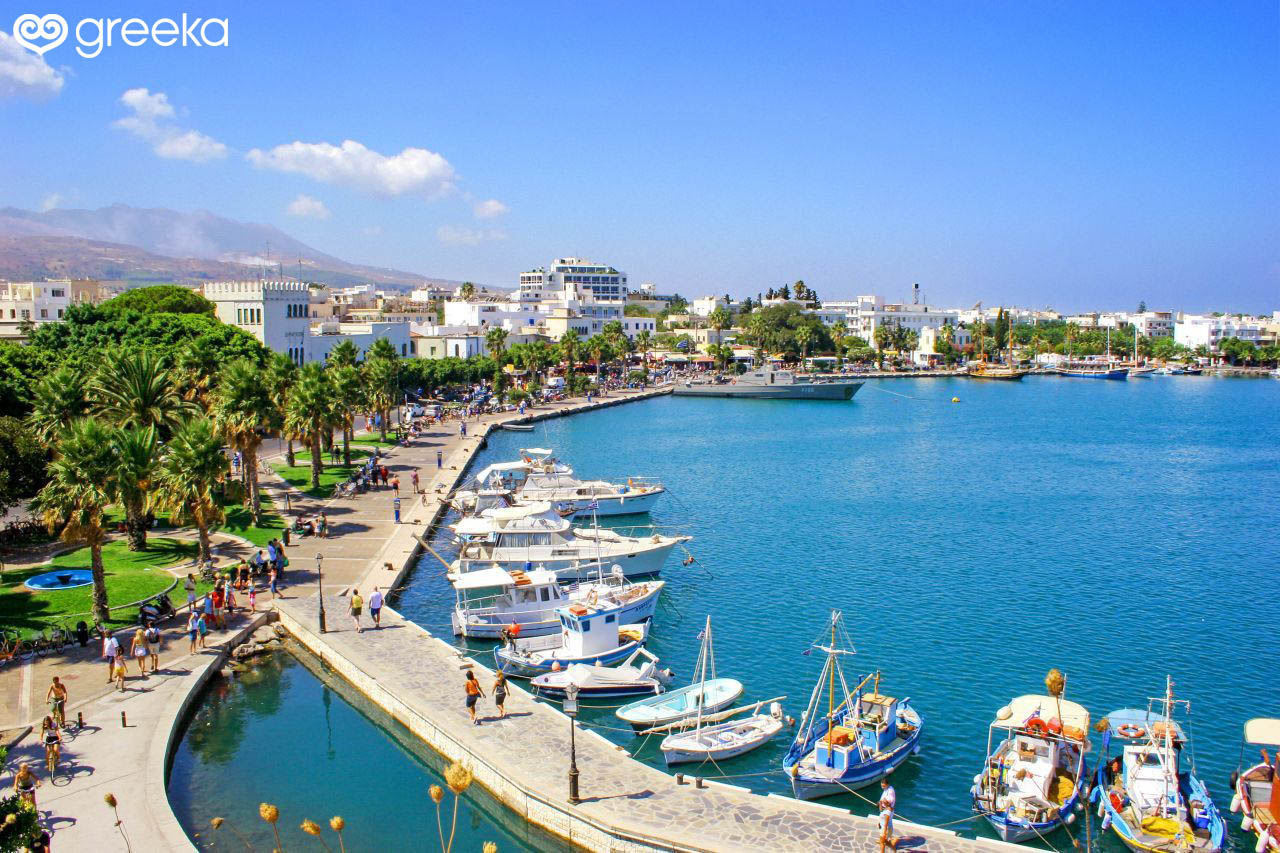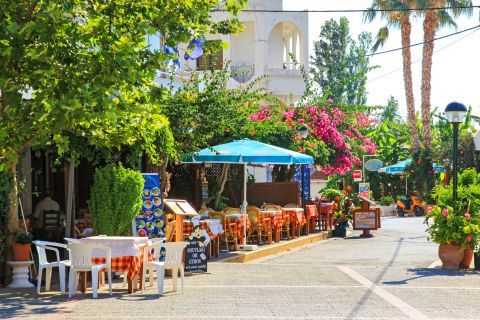Kos Town
Table of contents:
• General info • Hotels • Things to do & See • Map • Members Photos (449) • Greeka Photos (47) • Reviews (4)
• General info • Hotels • Things to do & See • Map • Members Photos (449) • Greeka Photos (47) • Reviews (4)
Hotels in Town
We have made a selection of the best hotels in Town.
Alexandra
$$-$$$
Hotel Apartments Studios4 stars
Recommended for: Central location, Sea views
Alexandra Hotel in Kos Town offers its guests a tastefully decorated, classic ambiance, a luxurious interior swimming pool and a sauna, great sea or city views and facilities to host business conferences as well. It is an ideal place to relax without missing all modern amenities.
Astron
$$
Hotel Suites Junior Suites3 stars
Recommended for: Location, Sea views
Astron Hotel comprises a 3-star hotel located in the heart of Kos Town. Featuring neat accommodation units, two swimming pools and a hot tub, it is a great choice for vacationers who seek lodging without spending too much for their stay.
Things to See & Do in Town
Check out the things to see & do in Town during your stay and explore what the area has to offer.
Sightseeing
Activities & Entertainment
Town Map
Explore our interactive map of Town.
Photos by Greeka Members
Photos by Greeka Team
Reviews
-
David crook 29 Oct 2023Stumbled upon the castle when visiting Kos TownI love a castle and a bit of history. Stumbled upon the castle when visiting Kos Town and had no admission fee to pay (possibly end of season). Sadly the museum wasn’t open but never the less the castle itself was lovely to had a look around. No safety barriers but aslong as you’re mindful of this, it doesn’t cause any problems (we had two children 5 and 8 with us!)
Definitely worth a look around to pass 30 mins -
Phil Harris 28 Oct 2023FascinatingI visited the site as a tourist in October, 2023. Fascinating to hear the shock therapy they used to basically scare the wits out of patients to have a different outlook on life. Locking them in a dark chamber for the night and then pitching hundreds of snakes in through an access in the roof. I think I'd be grateful to see the light of day in the morning as well if I'd been in there with many others. Then on another level a priest would visit patients calling them by name while they hallucinated on poppy seeds that were burned in another closed chamber. Convinced the following morning they had been visited by a god. A very pleasant site with plenty of parking and a cafe and toilets on site.
-
matthew.buick 19 Sep 2012Kos CastleThis is a lovely old castle, with a very reasonable entrance fee, but PLEASE PLEASE PLEASE be very careful when crossing the walkway bridge to get into the castle. It is very rickety, and the fences MUST NOT be leaned upon. Also, there are no safety fences anywhere in the castle itself, so please be very very careful near the castle walls, or any other edges.
-
Roger_Hill 21 Nov 2007Kos Town is a good all round resortAlways take my main holiday in Greece. I chose Kos Town as I had visited on a day trip from Kardamena many years ago and it seemed a good resort. Additionally, research on the internet indicated that it would be the type of resort I like, lively with a choice of nightlife and beaches.
Kos Town is a good all round resort. There are various historical sites to see. There are several beaches to choose from, which although not the greatest, are sandy and provide all you could need (Tigaki beach , also Angelika beach on main Kos Town). The nightlife is good with a mixture of lively music cars/clubs in Bar Street but also a good choice of quieter, more relaxing bars for those that prefer that (Four Roses, Kos Town - very friendly service). There is also a good local bus service linking Kos Town to the neighbouring Lambi and Psalidi and also buses further afield. I only went to Tigaki approximately 15 minutes) where there is a wonderful sandy beach and lovely child friendly shallow waters.
Good choice of restaurants serving Greek and international food. Stadium (near the Marina) was very high standard and Sunrise (near the tourist office) was also very good. Service in all restaurants was good. Food in the beach bars was also of a high standard Grabanna/Tarzan are examples). Don't go all-inclusive as you miss out on discovering the area. With all inclusives you deprive the local businesses of much needed trade.















